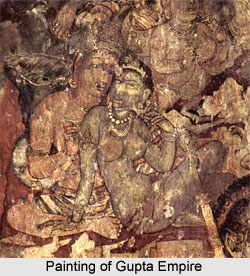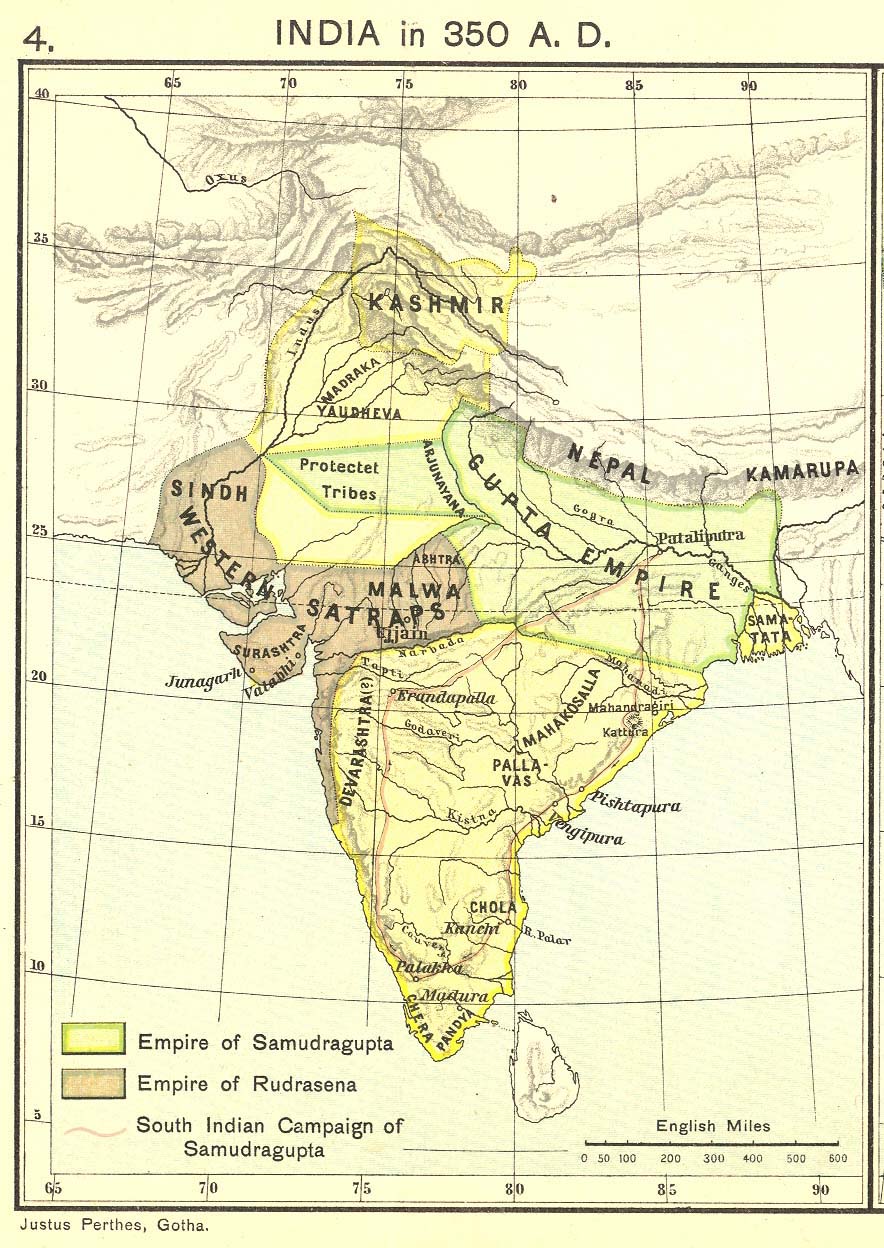
The Ganges and Indus rivers provided water and fertile soil. Environment: Draught was common in the Gupta empire, so the irrigation was essential. During the Gupta Empire, large religious thought growth occurred. The Gupta empire oversaw the growth and prosperity of Hinduism.
Gupta rulers (320–550) ruled over much of northern and central India. It is a coincidence that the names of the founders of both the major Hindu empires of ancient India were “Chandragupta”. The Gupta Empire was founded by Chandragupta the first (not to be confused with Chandragupta Maurya who founded the Maurya empire in the 3rd century B.C.E.). At its zenith, from approximately 319 to 543 CE.The age of the Guptas in the 3rd and the 4th centuries CE is considered to be the golden and classical age of ancient civilization.

According to the story he had uprooted 17 kings from the Ganges valley to lay the foundations of a pan-Indian empire.After the death of Bhanugupta in 570AD the Gupta empire declined and broke off. Samudragupta had inscribed the story of his conquests on the rustproof Askoka pillar, which today stands in the Pithoragarh (where the Kutub Minar was also built later Kutub-ud-din Aibak). Paintings of world-famous Ajanta caves were also made in this era. Sciences and Arts flourished. The country was united under one and the only rule of the Gupta Emperors and their allies. Gupta rulers bore simple title of maharajadhiraja (the great king of kings).
He shifted the capital from Pataliputra to Ujjaini (Modern Ujjain in Central India). Religious toleration and freedom of worship speaks greatly of the Guptas.But the most illustrious emperor of the Gupta line was Vikramaditya who succeeded Samudragupta. During this period literature, art and science flourished. It extended from the period of 320AD to 480AD.

Overseas commerce brought rich profits and added to peace and prosperity. The opening of the eastern and western ports brought new metals into the empire, which enabled the Gupta rulers to issue coins in gold, silver and copper. The Guptas did all within their power to encourage development, which may be regarded as the foundation of Modern Hinduism. The orthodox Brahmanical religion changed from the Vedic system, adopted the forms of Shaivism and Vishnuism and finally the caste system was accepted as the unbreakable foundation of society.
The information about Gupta Dynasty is known from the archaeological remains, inscriptions and coins.


 0 kommentar(er)
0 kommentar(er)
